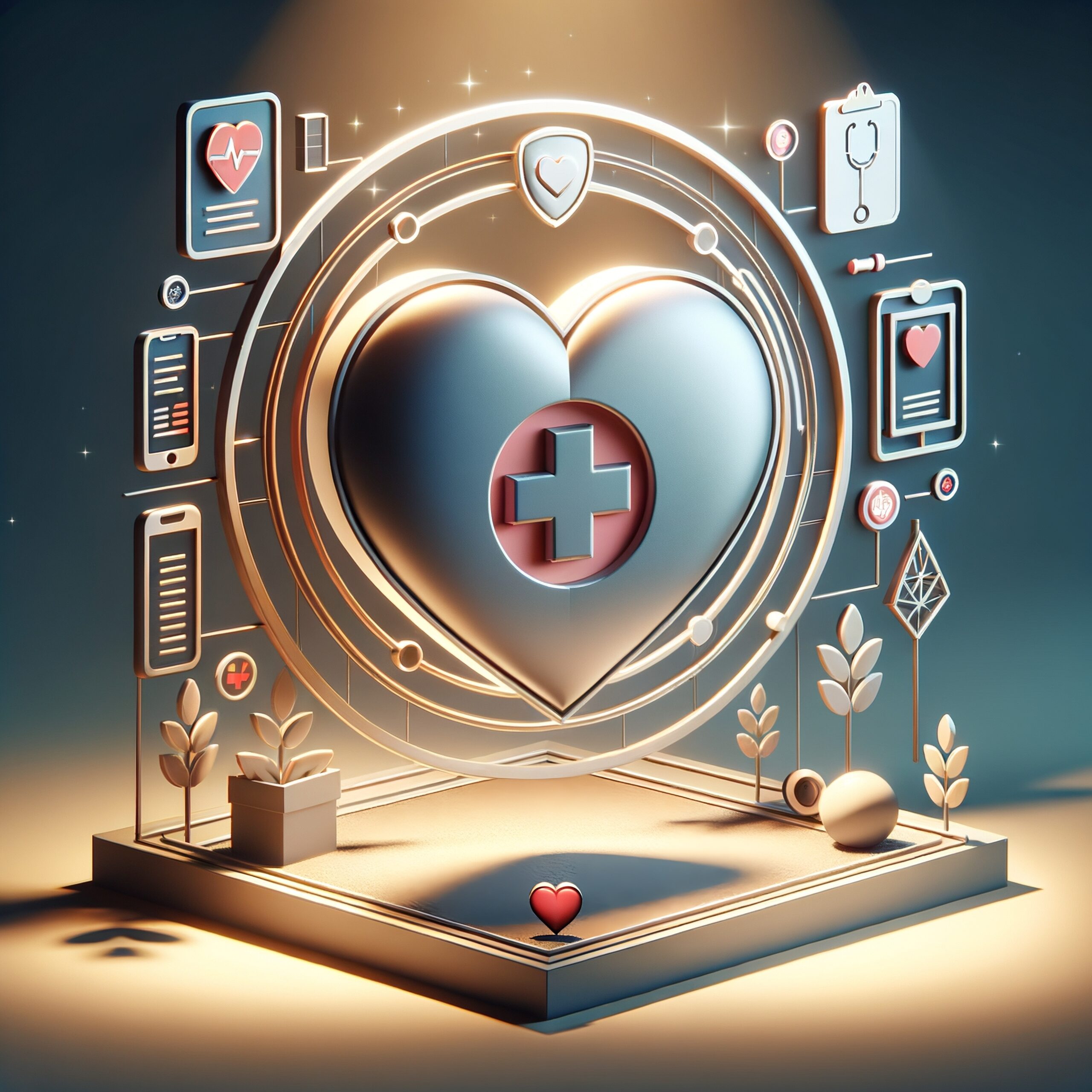CHR Standards: Redefining Healthcare Data Exchange with Real-Time, Patient-Driven Insights
In a rapidly changing healthcare landscape, there is a growing emphasis on patient-centered care, personalized treatment plans, and the real-time management of health data. The Consumer Health Record (CHR), guided by CHR Standards, represents a transformative innovation, offering comprehensive, accessible, and actionable health data. Unlike traditional Electronic Medical Records (EMRs) that focus mainly on episodic clinical visits, the CHR incorporates continuous real-world data from various sources, allowing healthcare stakeholders to enhance care delivery and optimize health outcomes.
The Need for a CHR
Current healthcare data systems, including EMRs and EHRs, capture vital information during clinical visits but often miss crucial aspects of the patient’s daily health experiences, lifestyle factors, and medication adherence. This results in a fragmented understanding of a patient’s health journey. For instance, research from the National Academy of Medicine reveals that over 50% of the 4.7 billion prescriptions filled annually in the U.S. are not taken as directed, leading to increased healthcare costs and poor health outcomes.
The CHR addresses these shortcomings by integrating Real-World Evidence (RWE) into patients’ health profiles, providing a continuous flow of data that includes patient-reported outcomes, wearable device information, and social determinants of health (SDoH). This robust approach not only enhances the completeness and accuracy of health data but also facilitates more personalized and proactive care.
What is the Consumer Health Record (CHR)?
The Consumer Health Record is a secure, patient-owned health record that captures real-time data from wearables, connected devices, and patient-reported outcomes. Unlike traditional EMRs and Pharmacy POS systems that only capture clinical or transactional data, CHR integrates Social Determinants of Health (SDoH), Patient-Reported Outcome Measures (PROMs), and data from devices like Apple Watch, Fitbit, Garmin, glucose monitors, hypertension and blood pressure monitors, pulse oximeters, and weight scales.
By aggregating all this information, the CHR provides a complete, real-time snapshot of a patient’s health, enabling healthcare providers and industry partners to deliver more personalized and effective care. Read out blog on The Patient’s Record as well.
Objectives of the CHR
Enhancing Medical Science: By aggregating RWE, the CHR provides insights that can drive innovation in drug development, clinical research, and public health strategies.
Personalized Health Outcomes: The integration of RWE into health profiles allows for tailored treatment plans that adapt to individual needs, ensuring better health outcomes for patients.
Components of the CHR Framework
Integration of Real-World Data
The CHR is powered by data collected from various sources, including wearables (e.g., Apple Watch, Fitbit) and connected medical devices (e.g., glucose monitors, blood pressure cuffs), which continuously feed valuable health metrics into a sealed health record.
Holistic Data Aggregation
By collecting diverse data types—such as patient-reported outcomes, genomic data, and social determinants of health—the CHR provides a comprehensive view of an individual’s health. This enables healthcare providers to make informed decisions based on real-world evidence.
Enhanced Communication Channels
The CHR framework supports bi-directional communication, allowing healthcare providers and patients to engage in real-time discussions regarding health management and treatment adherence.
Data Security and Privacy
The CHR ensures the secure sharing of identifiable data (PII and PHI) based on patient consent, while de-identified data can be shared with trusted providers, researchers, and payers for broader health insights, with profit-sharing agreements in place to benefit the consumer.
Health Education and Engagement
The CHR includes educational modules tailored to patient needs, empowering users with knowledge about their health conditions and promoting active participation in their care journey.
Limitations of Traditional EMRs
Traditional EMRs capture only episodic data, leading to a disjointed view of patient health. These systems do not effectively meet patients where they are, failing to capture the rich data generated by individuals outside clinical settings. The lack of integration with real-world data prevents a comprehensive understanding of health behaviors essential for effective treatment and prevention strategies.
The Value of RWE in Healthcare
Consumer Real-World Evidence (RWE) is becoming a cornerstone for improving healthcare outcomes. RWE encompasses a wider range of ongoing data inputs—such as patient-reported outcomes, wearable data, and SDoH—offering a more nuanced view of health compared to traditional EMR data. According to research published in the Journal of the American Medical Association (JAMA), integrating RWE into clinical practice significantly enhances patient outcomes and supports value-based care initiatives.

Applications of Consumer RWE
Pharmaceutical R&D
RWE aids in drug safety monitoring, informing clinical trial designs, and enhancing the understanding of treatment effectiveness in diverse patient populations.
Insurance Models
By leveraging RWE, insurers can refine risk assessment and create personalized insurance plans that promote value-based care, ultimately reducing costs and improving health outcomes.
Healthcare Providers
Access to comprehensive RWE empowers healthcare providers to adjust treatment plans in real-time, addressing issues of medication adherence and ensuring that clinical decisions are informed by the latest patient data.
Seamless Integration into Existing Systems
- EMR/EHR Compatibility: The CHR can be integrated seamlessly into existing EMR and EHR systems, enhancing their functionality by adding continuous, real-time data streams. This integration bridges the gap between episodic clinical data and ongoing health management, ensuring a more holistic approach to patient care.
- Secure Data Sharing: The CHR leverages private blockchain technology to ensure secure data exchange via FHIR or HL7 protocols, facilitating trust and transparency in patient data handling.
Security & Data Sharing with Patient Consent
Patient privacy and security are at the heart of the CHR. All identifiable data, such as Personally Identifiable Information (PII) and Protected Health Information (PHI), is only shared with trusted providers, pharmacists, and healthcare teams based on explicit patient consent. This ensures that no sensitive information is accessed without the patient’s approval.
Additionally, patients can choose to de-identify their data for broader use by pharmaceutical companies and insurance payers. When patients opt to share de-identified data, they can participate in profit-sharing programs, receiving compensation from industry partners for their data contributions to clinical research, pharmacovigilance, and personalized treatment development.
Real-Time Data Sharing: A Game-Changer for Pharma and Insurance
Pharmaceutical companies and insurance payers are increasingly leveraging real-world evidence (RWE) to make more informed decisions. The CHR provides these stakeholders with de-identified, standardized data for clinical trials, treatment efficacy analysis, and risk assessment. By tapping into real-time patient data from wearables and connected devices, they gain deeper insights into drug safety, patient adherence, and treatment outcomes—critical for advancing personalized medicine.
With patients’ consent, the CHR can also integrate this data into clinical research and pharmacovigilance systems, enabling quicker identification of adverse drug reactions and more responsive care interventions.

CHR Standards offer a transformative solution to the limitations of traditional EMRs by integrating real-world evidence and continuous data streams into healthcare data management. By focusing on medication adherence, personalized care, and community-level insights, the CHR empowers consumers and enhances the capabilities of healthcare providers, researchers, and insurers. Embracing consumer RWE through the CHR framework is essential for fostering effective, value-based care, ultimately leading to improved health outcomes for all.
Join the CHR Standards Committee: Be part of the movement to redefine healthcare data exchange. Collaborate with industry leaders to establish robust standards for data sharing, patient consent, and security. Together, we can create an ecosystem that not only empowers patients but also drives better health outcomes across the industry.
The CHR (Consumer Health Record) addresses the fragmentation in health information by consolidating and standardizing a consumer’s health data across various sources. This ensures that individuals have a comprehensive, accessible, and personalized record of their health journey.
Problems Solved:
1. Fragmented Health Information: Consumers often receive healthcare from multiple providers, making it challenging to access their complete health history. The CHR integrates this data into a unified platform.
2. Lack of Consumer Engagement: Traditional health records are not consumer-friendly. The CHR empowers consumers by providing an easy-to-navigate and understandable health record, encouraging them to take an active role in their health management.
3. Data Inconsistencies and Gaps: Different health systems often have varying data standards. The CHR creates consistency by unifying these records, reducing discrepancies and improving care coordination.
Value Brought:
1. Personalized Health Management: The CHR offers a customized view of the individual’s health journey, including medications, allergies, and medical history, enabling better decision-making.
2. Improved Healthcare Outcomes: With a comprehensive and accurate health record, consumers and healthcare providers can collaborate more effectively, leading to improved diagnoses, treatments, and outcomes.
3. Data Ownership and Control: Consumers gain ownership and control over their health data, with the ability to share anonymized information for research or keep it private, enhancing trust and transparency.
4. Enhanced Preventive Care: By tracking health trends and insights, the CHR can identify potential health risks early, promoting proactive measures and interventions.


